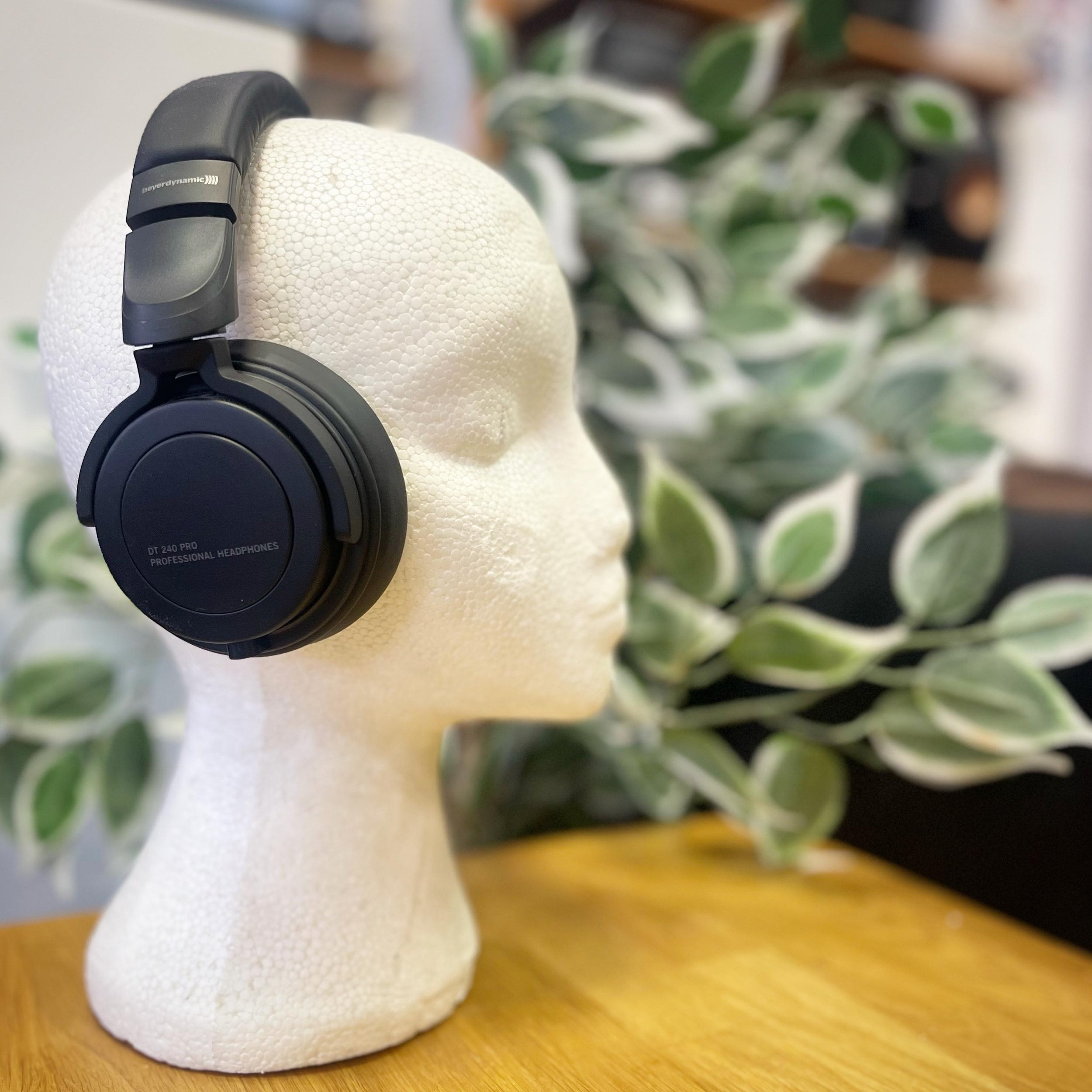Open or Closed-Back Headphones? What’s the difference?
/Don’t we all just love putting on our headphones and retreating into our own solitude from time to time? The world is drowned out and whatever you’re listening to has your undivided attention. For example, picture yourself on an 8-hour flight - a good-quality pair of headphones can make an otherwise noisy flight far more relaxing and enjoyable. But with such a huge variety of headphones out there, which ones will sound the best? And what factors contribute to their overall quality? Today’s article will be discussing the differences between open and closed back headphones, which will hopefully help you make a more informed decision when purchasing your next pair.
Open-back headphones
Firstly, for those who aren’t familiar, let’s answer the question of “what are open-back headphones?”. Open-back headphones allow air from the rear of the speaker driver to pass through the ear cups, meaning that low-frequency build-up and resonances caused by the enclosure are not an issue. This allows them to sound more clear and natural, which is great if you’re using them for critical listening or mixing and mastering. This also makes them a go-to option for audiophiles seeking the highest quality.
Despite their advantages, you’ll only tend to get the best out of this type of headphones if you’re in a relatively quiet surrounding, due to their inability to completely block out noise. So you wouldn’t necessarily want to use these when commuting on public transport or at the gym where there is a lot going on. As well as allowing sound in, they leak sound out too, so others around will be able to hear what you’re listening to. Picture this, you’re at work, in your own world and listening to music through open-back headphones. Your colleagues begin raising their eyebrows in annoyance, wondering where that racket is coming from - cue the idle gossip about your awful music taste! Who will have more to answer for in this situation?! You, for being unintentionally inconsiderate for playing such loud music? Or the others, for brazenly ‘dissing’ your playlist? Anyway, I digress… Or do I? Really and truly, no-one is in the wrong, everyone thought the other couldn’t hear them, but it turns out the open-back headphones had other ideas…
Closed-back headphones
As you’ve most probably guessed, closed-back headphones are the exact opposite. They are completely sealed on the back of the earcup, meaning sound can’t leak out past your ears. Their inherent ‘noise-cancelling’ qualities means that you can listen in a somewhat busy environment and not hear most, if any of the background noise. Equally, people around you can’t hear the audio leaking either, so it’s a win-win for everyone.
It’s important to note that closed-back headphones aren’t the same as noise cancelling. Active noise-cancelling (or 'ANC') headphones come mostly in wireless form and work via a microphone capturing the targeted ambient sounds, and a small amplifier generates sound waves that are exactly out of phase with the undesired background noise. When the sound pressure of the noise wave is high, the cancelling wave is low (and vice versa). The opposite sound waves collide and are eliminated or "cancelled".
Whilst blocking out background noise is brilliant for anyone that wants to be in their own solitude, this may affect their listening experience. The sealed ear chamber can result in the low frequencies building-up and being emphasised, meaning it won’t sound as good or as natural as it should. You may also eventually have the small inconvenience of your ears feeling quite warm because of the lack of ventilation due to the sealed chamber design. Whilst closed-back headphones may be great for recording audio professionals, probably not the best option during a workout; sweaty, red ears aren’t the most flattering of looks! You may want to give an in-ear option a go instead!
So, which type should I buy?
Well, that’s the big question isn’t it? Obviously, taking into consideration the pros and cons of both types of headphones, your purchase may be swayed by how you intend on using them. As previously mentioned, if you’re in a public setting or perhaps listening at home whilst trying not to disturb other people in the room, you may find the closed-back to be the best option. What I think is really important to note is that just because a pair of headphones is designed in a certain way, doesn’t necessarily always make them sound better than one another. You can try two different models or brands of closed-back headphones and find the results to be completely different. The moral of the story? It’s important for you to try them out for yourself. With that in mind, be sure to Contact Us to book a FREE demonstration. We can set you up with a turntable and amp, a streamer and headphone amp, or simply your phone and a DAC. We’ll ensure you’re testing the headphones in the right way!
Thanks for reading
Elena, John & Jason – Audio T Enfield
If you have any questions about any of the equipment featured in this article, or any other Hi-Fi or home cinema enquiries, be sure to Contact Us.
If you’ve enjoyed this, why not go ahead and read some more of our other blogs, and be sure to follow us on our social media channels below…
Beyerdynamic can be found at the following Audio T stores:










